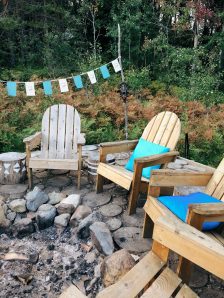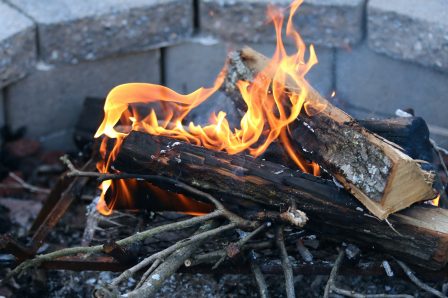So, you’ve decided to take it upon yourself to build your own fire pit, but you’re not sure where to start. Does this sound like you? If so, keep reading! We know that building a fire pit on your own can seem like a daunting task, so we’ve put together a list of some pointers and main considerations to check out before you start building. Soon, you’ll be well on your way to constructing your custom-built fire pit!
Things to Consider Before Building a Fire Pit Yourself
 1. Check the building codes in your area
1. Check the building codes in your area
Before building a fire pit, one of the very first things you should do is check the building codes in your area to get the right regulations and requirements. Depending on where you live, your local government may impose certain rules and restrictions on the size, location, and material of a backyard fire pit due to the potential for fire-related property damages. If you don’t build your fire pit in accordance with these rules, you could potentially be fined.
2. Choose the location wisely
The location in which you build your fire pit is extremely important. It’s never a good idea to build a fire pit in hazard-prone areas. For example, be sure to position the fire pit in a spot that’s away from your cabin or house, away from low-hanging trees and other structures, and not in an area that’s prone to unfavorable winds.
3. Invest in some fire safety equipment
If you’re building a fire pit, it’s a smart idea to buy some fire safety gear, too. Store a fire blanket close by to help smother the beginnings of a fire on people or objects. By the same token, you should also be sure to have a fire extinguisher on hand in case of emergency.
4. Know your fire safety
It may sound obvious, but it’s crucial that you refresh yourself on fire safety practices before building a fire pit. Worst case scenario, failure to practice proper fire safety can be a matter of life and death. Select Security recommends that you keep the following things in mind when using a fire pit:
- Check the wind direction and strength before you light a fire. Make sure that smoke, ashes, or debris from the fire pit are not blowing toward your home or in your face. If it’s too windy, avoid lighting the fire pit altogether.
- When lighting or relighting a fire pit, do not use gasoline, lighter fluid, or other flammable liquids.
- If you are in charge of tending to the fire pit, do not wear flammable or loose-fitting clothing.
- Only burn dry wood that has been cut at least six months ago, and avoid using soft wood such as pine or cedar that will likely pop or throw sparks.
- Do not burn trash, leaves, paper, cardboard, or plywood.
- Safely dispose of fire pit ashes after use.
There you have it! If you keep these things in mind, building your own fire pit should be a breeze!
